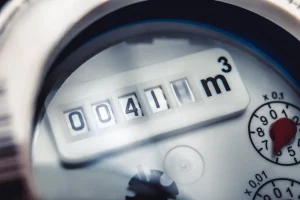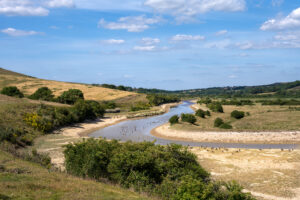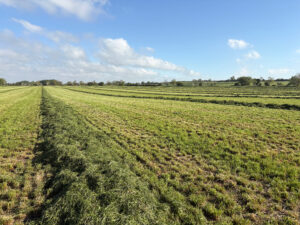It’s easy to take water for granted as we use it every day. But, have you ever stopped to think about the journey each drop takes to get to your tap? Whether you’re running a business in Essex, have a salon in Southampton, or brew coffee in Cambridge, the water we all use may be sourced from entirely different places, even though it’s required to meet the same high standards.
Today, we’re going to take a journey through the fascinating process that gets water from its source to your tap, and explore how climate change, sustainability, and modern technology are shaping the future of water in the UK.
So, where exactly does my tap water come from?
All tap water in the UK originates from natural sources—primarily rainfall or snowmelt. The condition of the water and the treatment it requires depend on where it’s sourced. Whether you live in a bustling city or rural countryside, your tap water will come from one of three main sources:
- Rivers
- Groundwater
- Reservoirs
Rivers: Water from rivers often ends up in reservoirs or is sent directly to pump stations for treatment before it reaches consumers. The location and availability of rivers dictate how much water they can supply.
Groundwater: This refers to water that collects in large underground pools, often referred to as aquifers. This water can seep through soil from rainfall or filter down from rivers. These underground pools can be as deep as 100m or more, and many of the UK’s groundwater supplies pass through layers of limestone or chalk, which influences water hardness.
Reservoirs: Reservoirs are either naturally occurring lakes or human-made structures built to store water. Many reservoirs in the UK were built in the 1800s to meet growing demand as local rivers became insufficient.
How does water get from a source to my tap?
The water we use is transported via an extensive and sophisticated network of pipes. Every premises is connected to a mains pipe that links to a broader regional network, all of which leads back to local treatment centres where the water is purified and prepared for use. The scale of this system is vast, connecting towns, cities, and even crossing regions to ensure a reliable supply.
Infrastructure modernisation
Water networks are constantly being updated to meet the challenges of growing populations and ageing infrastructure. With many UK cities still relying on Victorian-era pipework, significant investments are being made in modernising these systems to prevent leaks and ensure a steady supply for future generations. Smart water meters and AI-driven leak detection systems are part of the effort to improve efficiency and sustainability.
Why does tap water come from different sources?
Water sources vary depending on supply and demand. In southern England, where water is scarcer, water may be transferred between towns to keep supply consistent. For instance, Brighton might rely on water from Worthing during high demand periods. An interesting case is the Isle of Wight, where water is often imported from the mainland when local reservoirs run low.
However, increasing climate variability due to climate change is affecting water availability. Prolonged droughts or floods can disrupt local supplies, making the need for regional cooperation and alternative water sources even more crucial.
Why is tap water hard in some places and soft in others?
The mineral content of water defines its hardness or softness. If you’ve ever noticed a difference in water when travelling from the north to the south of the UK, it’s due to this variation. Areas like London and much of southern England rely heavily on groundwater, which passes through limestone and chalk aquifers, picking up minerals like calcium and magnesium. This makes the water “harder,” which can affect everything from the taste of your tea to the performance of your washing machine.
Water hardness and business impact
For businesses, water hardness can play a role in operational costs. Cafés may need to invest in water softeners to protect their coffee machines, while hair salons may notice that hard water leaves hair feeling different. Understanding local water conditions can help businesses adapt and save on long-term maintenance.
Is tap water 100% safe to drink?
The UK has one of the most rigorous regulatory systems for water quality in the world. Water must meet strict health and safety standards before it reaches your tap. Regular testing ensures that contaminants, such as microplastics, chemicals, or bacteria, are well below harmful levels. However, public awareness about contaminants like pesticides or pharmaceutical residues has grown, and advancements in water treatment technologies are continuously improving how these are filtered out.
Even with these safeguards, it’s essential to stay informed about your local water quality. Many water companies offer online tools where you can check the latest water quality reports for your area, such as Thames Water, Severn Trent or Scottish Water.
How does climate change affect water supplies?
As global temperatures rise, the UK’s water system faces new challenges. Droughts, floods, and shifting rainfall patterns are altering the availability of water, particularly in southern regions. Reservoirs may struggle to refill after dry seasons, and rivers can become overburdened during floods. To combat this, many water suppliers are turning to sustainable solutions, such as water recycling, desalination plants, and conservation programmes, to ensure long-term supply.
What can you do to conserve water?
With water becoming an increasingly precious resource, both businesses and individuals can take steps to reduce consumption. Simple actions like fixing leaky taps, installing water-efficient appliances, or reusing rainwater can make a big difference. Businesses, in particular, can benefit from conducting water audits to find opportunities for reducing water waste and improving efficiency.
Looking to improve your water management?
As the UK’s leading independent business water supplier, we provide tailored water and wastewater services that both save you money and support the wider business water infrastructure, whether you run a café, salon, or large-scale operation. Our focus on sustainability ensures we can help you reduce consumption, manage costs, and future-proof your water services.
If you’re considering switching business water supplier or want advice on how to manage your water more efficiently, get in touch today.



